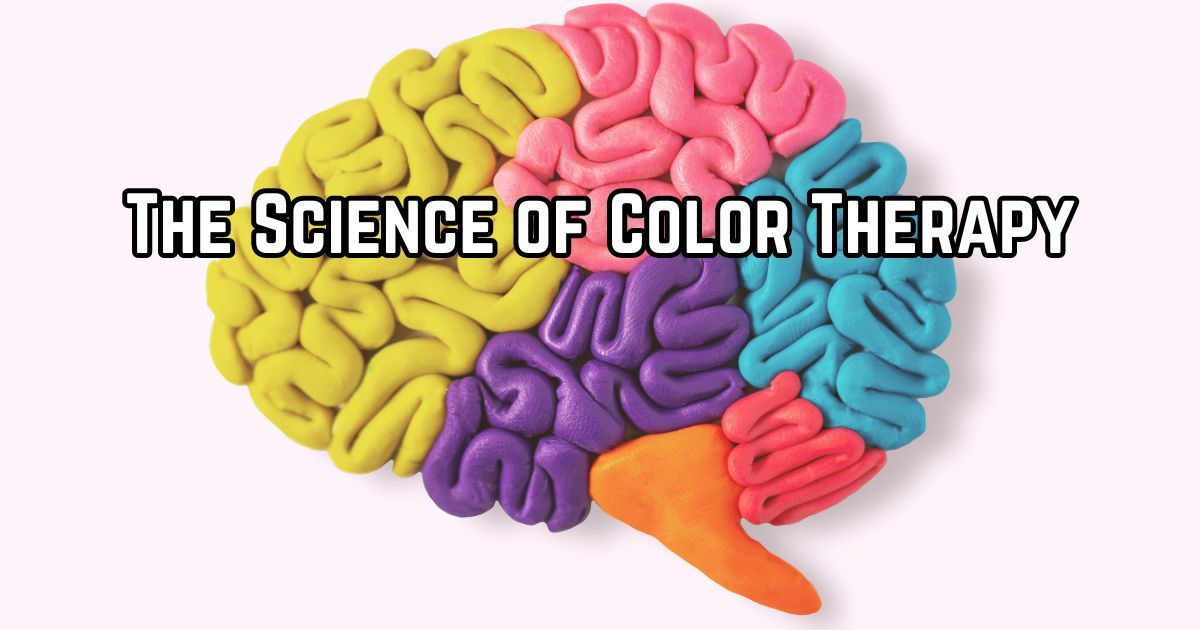Color therapy (CT), an ancient practice with roots stretching back through centuries, has witnessed a resurgence in the realm of holistic health. This resurgence is driven by a growing acknowledgment of how profoundly colors can impact our mood, mental health, and overall well-being. In this two-part exploration, we delve into the science behind color therapy, uncovering its benefits, practical applications, and how it can be integrated into daily life for enhanced emotional and physical health.
Introduction to Color therapy
Also known as chromotherapy, is a non-invasive holistic practice that utilizes the visible spectrum of light and color to affect a person’s mood and physical health. The concept is simple yet profound: different colors correspond to different frequencies and energies, which can influence various aspects of human psychology and physiology.
The historical background of color therapy is rich and varied, with evidence of its use in ancient Egypt, China, and India. These cultures believed in the healing power of color, using it to promote balance and healing within the body and spirit. Fast forward to today, and the principles of color therapy are being revisited and validated by modern science, particularly in the field of psychology, where the impact of color on mood and mental health is a subject of ongoing research.
The Science Behind Chromotherapy
At its core, color therapy operates on the principle that colors can stimulate certain responses in the brain, leading to effects on mood, emotional state, and energy levels. For instance, blue is known for its calming properties, reducing stress and creating a sense of tranquility, while red may stimulate energy and alertness. This psychological and physiological response to color is what makes color therapy a compelling tool for holistic health practices.
Integrating color therapy into one’s life doesn’t require drastic changes. It can be as simple as choosing clothing, decorations, or lighting that incorporates beneficial colors. Furthermore, exposure to natural sunlight, which encompasses the full spectrum of light, has been shown to have uplifting effects on mood and mental well-being, emphasizing the intrinsic value of incorporating more natural elements into our environments.
Benefits of Color Therapy
The benefits of color therapy are wide-ranging, touching on various aspects of mental and physical health:
- Stress Management: Incorporating calming colors like blue and green into one’s surroundings can help reduce stress levels and promote a sense of peace.
- Improved Sleep: Certain colors, such as soft blues and greens, can create a restful environment conducive to sleep.
- Energy Rejuvenation: Brighter colors, such as yellow and orange, can invigorate and provide an energy boost, particularly useful for combating feelings of lethargy or depression.
- Emotional Balance: Colors have the power to influence emotions, helping to lift spirits and improve overall mood.
How to Practice Color Therapy
Practicing CT can be straightforward and personalized. Here are some methods to integrate color into daily life for health benefits:
- Environment Color Selection: Choose wall colors and furnishings in shades that evoke the desired emotional response, whether it’s calm, energy, or happiness.
- Sunlight Exposure: Make time for outdoor activities to benefit from natural light, which contains the full color spectrum.
- Use of Color Therapy Glasses: Colored glasses can filter light, providing mood-enhancing benefits according to the color chosen.
Incorporating Color Therapy in Daily Life
Integrating CT into your daily routine can be both simple and transformative. Here are some advanced techniques to consider:
- Color Visualization: Start your day with a meditation focused on a color that aligns with your desired state of mind. Visualize being enveloped in this color to set the tone for your day.
- Color-Infused Environment: Beyond just wall colors, incorporate colored fabrics, lighting, and art to create a healing atmosphere in your home or workspace.
- Creative Expression: Engage in activities like painting or coloring that allow you to express emotions through the use of color. This can be a powerful tool for emotional release and balance.
Chakras and Chromotherapy
Balancing your chakras can enhance mental, emotional, and physical well-being. Each chakra is associated with different colors, which can be used to promote balance and healing:
- Root Chakra (Red): Grounding and stability
- Sacral Chakra (Orange): Creativity and sexuality
- Solar Plexus Chakra (Yellow): Personal power and confidence
- Heart Chakra (Green): Love and compassion
- Throat Chakra (Blue): Communication and truth
- Third Eye Chakra (Indigo): Intuition and insight
- Crown Chakra (Violet): Spiritual connection and consciousness
FAQs on Color Therapy
- Can CT help with anxiety?
- Yes, colors like blue and green are known for their calming effects, which can help reduce anxiety levels.
- How long does it take to see benefits from CT?
- The effects can be immediate for some, while others may notice changes over a period of days or weeks. It depends on individual sensitivity to color and the method of therapy used.
- Is CT safe for children?
- Absolutely. Color therapy is non-invasive and can be particularly effective for children, helping with focus, mood, and sleep.
- Can color therapy be used alongside other treatments?
- Yes, color therapy can complement other treatments, acting as a supportive therapy to enhance overall well-being.
- How can I start practicing color therapy at home?
- Begin by introducing colors into your environment that align with your desired outcomes. Experiment with colored lights, decor, and clothing to see how different colors affect your mood and energy levels.
